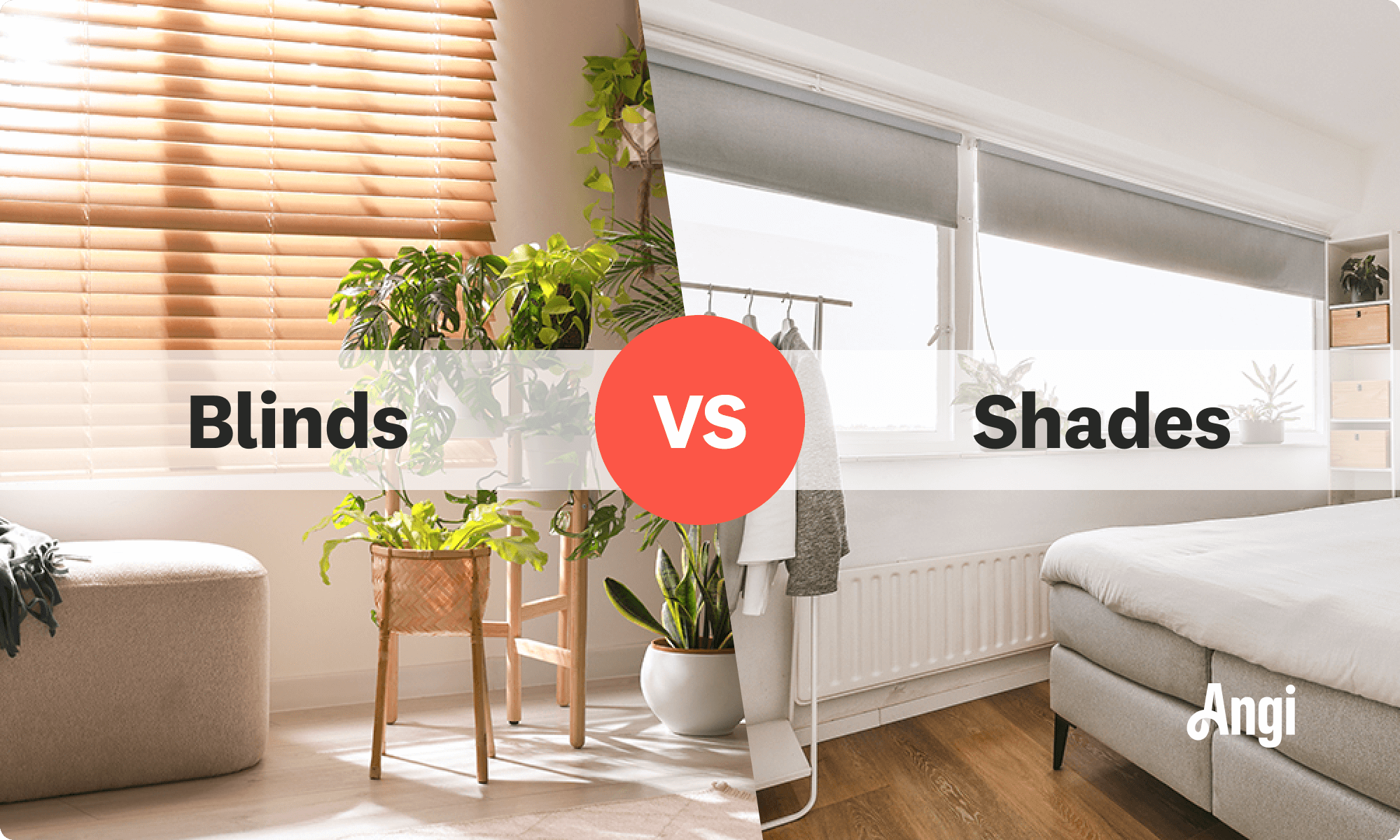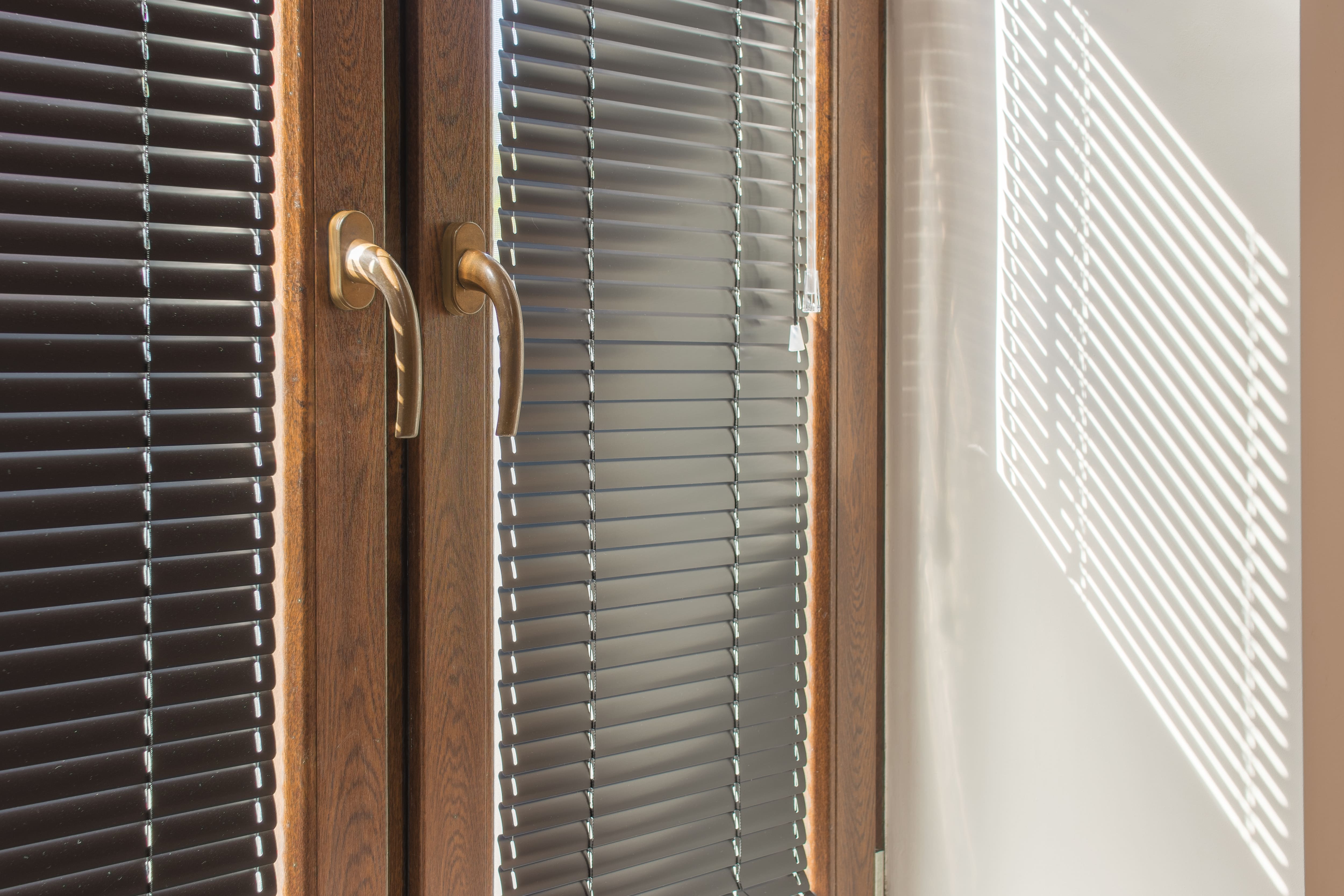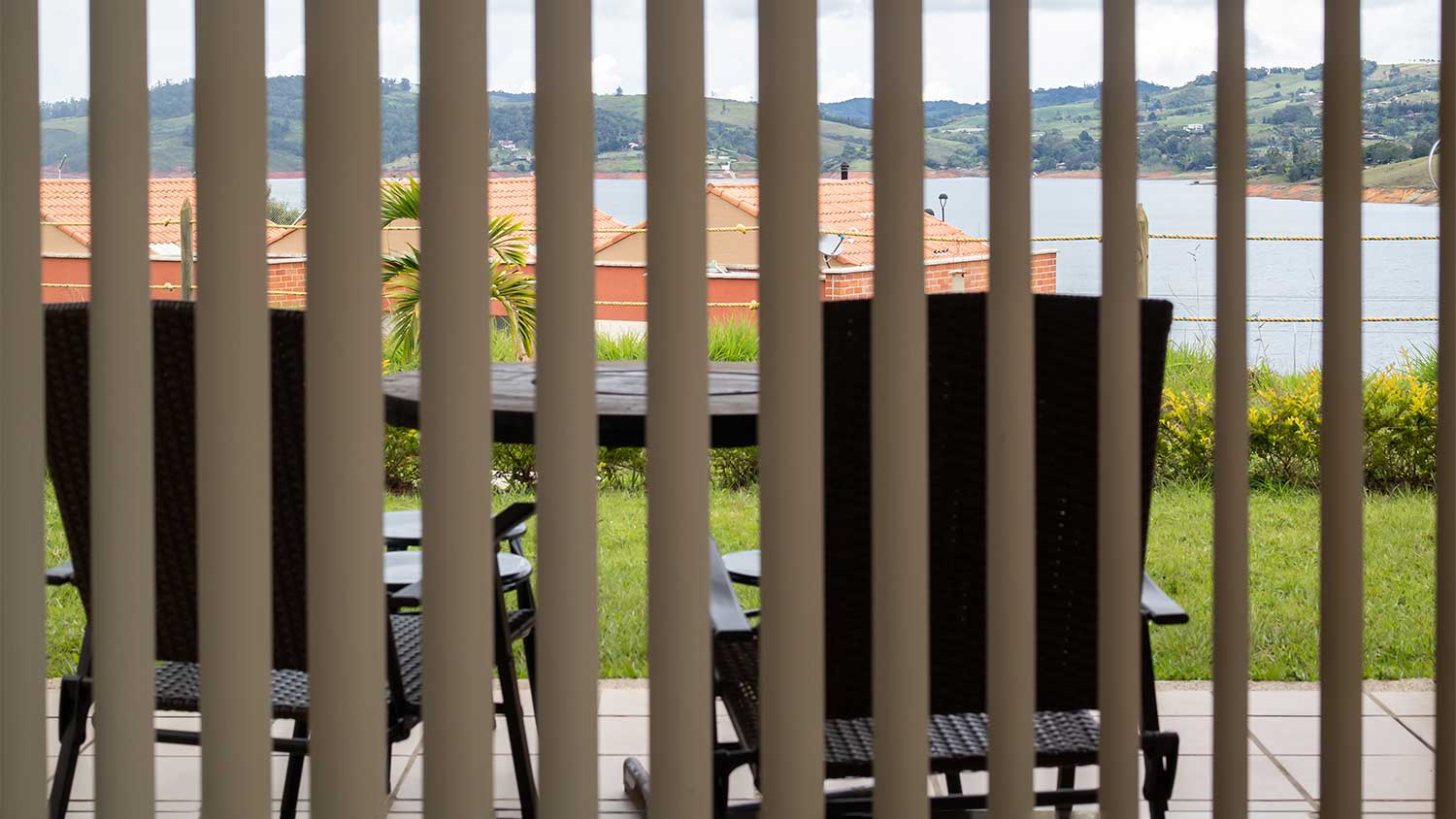9 Types of Blinds for Windows: How to Choose the Best Window Treatment
A window treatment that’s easy on the eyes


Window blinds can be used to control light, increase privacy, and regulate the room’s temperature, making this a quick fix that can complete the look of your space. Once you’ve measured for blinds, you can choose from different types, such as Venetian blinds, wood blinds, and smart blinds. Browse through some of the different types to find the option that best fits your needs before hiring a professional to install your blinds.
Blinds vs. Shades
Blinds and shades are sometimes used interchangeably, but it’s important to note their differences when shopping for window coverings for your home. The most distinct difference between the two is that blinds are window treatments with individual slats that can be tilted to open or close them. Shades, however, are made from one continuous piece of soft fabric. Some popular types of shades include cellular shades, roller shades, Roman shades, and solar shades.

1. Venetian Blinds

Venetian blinds tend to be one of the most popular options for window treatments. They’re composed of horizontal slats that open from the bottom and are operated by a rope system to control the movement of the blinds. The slats can be made from wood, metal, or plastic, and can be tilted to either let more or less light in as needed.
| Pros | Cons |
|---|---|
| Easy to adjust | Can be hard to install |
| Stylish | Can be hard to clean |
| Water resistant | Don’t fit all windows |
Best For: Style and flexibility
2. Vertical Blinds

Vertical blinds are slats of material—usually vinyl or fabric—that cover windows and doors with panels that run perpendicular to the floor. They’re a common treatment for sliding doors or tall glass windows. One benefit to vertical blinds over horizontal blinds is that if one of the slats breaks or is damaged, you can replace the individual piece rather than the entire unit.
| Pros | Cons |
|---|---|
| Easily adjustable | Can break easily in the breeze |
| Match many home styles | Require more space |
| Easy to clean | Can be hard to install |
Best For: Affordability and low maintenance
3. Mini Blinds

Mini blinds work similarly to venetian blinds, however, their slats are more narrow—typically one inch—and they are most commonly made from metal. This makes them a more affordable option compared to other types of blinds.
| Pros | Cons |
|---|---|
| Good at reducing heat gain | Not good at insulating |
| Good option for home offices | Need frequent cleaning |
Best For: Modernity and keeping heat out
4. Micro Blinds

Micro blinds are comparable to mini blinds, as they’re opened from the bottom using a cord or pulley system. However, they’re even more narrow than mini blinds, measuring half an inch high.
| Pros | Cons |
|---|---|
| Can be installed in narrow window or door frames | Let less light in when slats are tilted open |
| Privacy offered when slats are tilted open | Can be hard to clean |
Best For: Windows without much depth and offices
5. Aluminum Blinds

Aluminum blinds are commonly used in rooms that have high sun exposure due to their heat-resistant properties. They are a great choice for high-traffic and bright areas like patio doors. They can be found in a variety of widths, and come in corded or cordless versions. They are durable and lightweight, and have a lower price tag than other options, making them a popular choice for window treatments.
| Pros | Cons |
|---|---|
| Affordable | Doesn’t have a very refined aesthetic due to material |
| Easy to clean | Can be noisy |
| Dust collection is highly noticeable |
Best For: Durability and ease of installation
6. Wood Blinds

Wood blinds give a classic look to the room and provide insulation, privacy, and light control. They can be made from different types of wood, such as cherry, oak, or bamboo. Compared to other types of blinds, real wood has better insulation properties and an unmatched texture, making for an elegant design statement.
| Pros | Cons |
|---|---|
| Stylish look | Not suitable for kitchens and bathrooms |
| Offers good insulation | Expensive |
Best For: Appearance and light control
7. Faux Wood Blinds

Faux wood blinds are made from PVC, composite, or vinyl to mimic the look of real wood. They come in a variety of styles and colors, so you can find the best match for your space. Compared to real wood blinds, faux wood has a lower price tag and is easier to clean.
| Pros | Cons |
|---|---|
| Less expensive than real wood | Not as high quality as real wood |
| Easy to clean | Cannot be re-stained if damaged |
| Stylish look |
Best For: Durability and ease of maintenance
8. Motorized Blinds

For a more convenient way to open and close your window covering, opt for motorized blinds that can be controlled with the click of a button. They are operated using an electric motor that lifts or closes the blinds using a remote. There are various types of motorized blinds, and they can be hardwired, solar-powered, or battery-powered, depending on your preferences.
| Pros | Cons |
|---|---|
| Easy to use | Can be expensive |
| Kid and pet safe | Potential for systems to malfunction |
Best For: Convenience and safety
9. Smart Blinds

A step above motorized blinds is the smart blind, which is a window covering that can be opened or closed using an app on your smartphone. These come in a variety of styles and colors, can be controlled by your voice, and can even be set on a schedule.
| Pros | Cons |
|---|---|
| Functions simply with remote and/or app | Potential for systems to malfunction |
| Can automate settings as needed | May cause privacy concerns due to connected devices |
| Can integrate with other smart home systems | Upfront cost is expensive |
Best For: Smart homes and privacy
Considerations When Choosing Blinds
Browse through some different factors to keep in mind when choosing blinds for your windows.
Light Control
When searching for blinds, consider the use of the room and how much natural light is let in throughout the day. Keep in mind the direction the room faces and decide whether or not you need the blinds to tilt to let a certain amount of light in or to completely blackout a room.
Corded vs. Cordless Options
Corded blinds operate using a pulley system with a cord or a chain to lift or lower the blind. Conversely, cordless blinds operate with a tension mechanism to control the blind without the use of a cord.
Corded blinds have a lower price tag and work better for tall windows that you may not be able to reach without the use of a cord. Cordless blinds, however, are a safer option for those with pets or small children and are a more convenient and seamless-looking choice.
Privacy
If you’re looking for more privacy, consider the material of the blinds and how much of a gap there is between the slats and the window. Opt for a more opaque material, such as wood or aluminum, rather than a fabric to increase the privacy in the room. Moreover, consider mounting the blinds on the outside of the window rather than the inside of the frame to eliminate any gaps between the window and the edge of the unit.
Improve Insulation
Blinds can be used to regulate the temperature in your home by acting as a barrier between the room and the window. Certain blinds have higher insulating properties, so keep this in mind if you live in an area that experiences more extreme temperature fluctuations.
Window Size
Certain blinds work better for larger windows. For example, panel blinds or vertical blinds are often the preferred choice for taller windows or glass doors. Moreover, if you have wide windows, you may prefer a wider slat to balance out the window size.
Paul Pogue contributed to this piece.





- How to Remove Window Blinds—Plus, Tips to Keep Them Looking Brand New
- How to Clean Blinds and Remove Dust Without Damaging Them
- How to Fix Vertical Blinds With 6 Simple Tips
- How to Measure for Blinds to Get the Perfect Fit
- 6 Window Treatments to Help Block out Light
- 8 Best Insulating Window Treatments for Energy Efficiency
- 10 Tips on How to Make Windows More Energy Efficient
- 15 Kitchen Window Ideas to Inspire Your Culinary Space
- How Long Do Windows Last and When Should You Replace Your Windows?
- 15 Window Design Ideas to Transform Your Home










